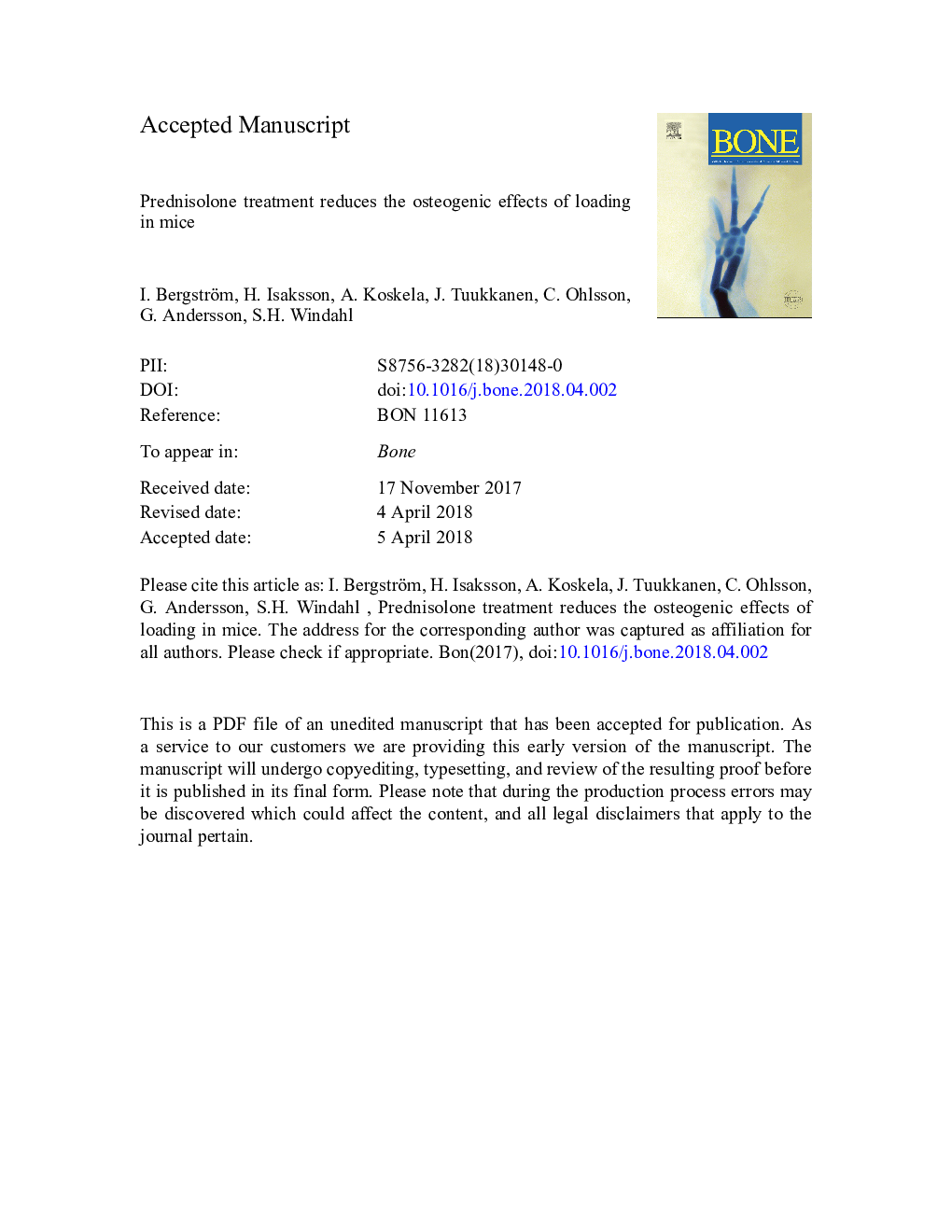| Article ID | Journal | Published Year | Pages | File Type |
|---|---|---|---|---|
| 8624864 | Bone | 2018 | 30 Pages |
Abstract
Glucocorticoid treatment, a major cause of drug-induced osteoporosis and fractures, is widely used to treat inflammatory conditions and diseases. By contrast, mechanical loading increases bone mass and decreases fracture risk. With these relationships in mind, we investigated whether mechanical loading interacts with GC treatment in bone. Three-month-old female C57BL/6 mice were treated with high-dose prednisolone (15â¯mg/60â¯dayâ¯pellets/mouse) or vehicle for two weeks. During the treatment, right tibiae were subjected to short periods of cyclic compressive loading three times weekly, while left tibiae were used as physiologically loaded controls. The bones were analyzed using peripheral quantitative computed tomography, histomorphometry, real-time PCR, three-point bending and Fourier transform infrared micro-spectroscopy. Loading alone increased trabecular volumetric bone mineral density (vBMD), cortical thickness, cortical area, osteoblast-associated gene expression, osteocyte- and osteoclast number, and bone strength. Prednisolone alone decreased cortical area and thickness and osteoblast-associated gene expression. Importantly, prednisolone treatment decreased the load-induced increase in trabecular vBMD by 57% (pâ¯<â¯0.001) and expression of osteoblast-associated genes, while completely abolishing the load-induced increase in cortical area, cortical thickness, number of osteocytes and osteoclasts, and bone strength. When combined, loading and prednisolone decreased the collagen content. In conclusion, high-dose prednisolone treatment strongly inhibits the loading-induced increase in trabecular BMD, and abolishes the loading-induced increase in cortical bone mass. This phenomenon could be due to prednisolone inhibition of osteoblast differentiation and function.
Related Topics
Life Sciences
Biochemistry, Genetics and Molecular Biology
Developmental Biology
Authors
I. Bergström, H. Isaksson, A. Koskela, J. Tuukkanen, C. Ohlsson, G. Andersson, S.H. Windahl,
